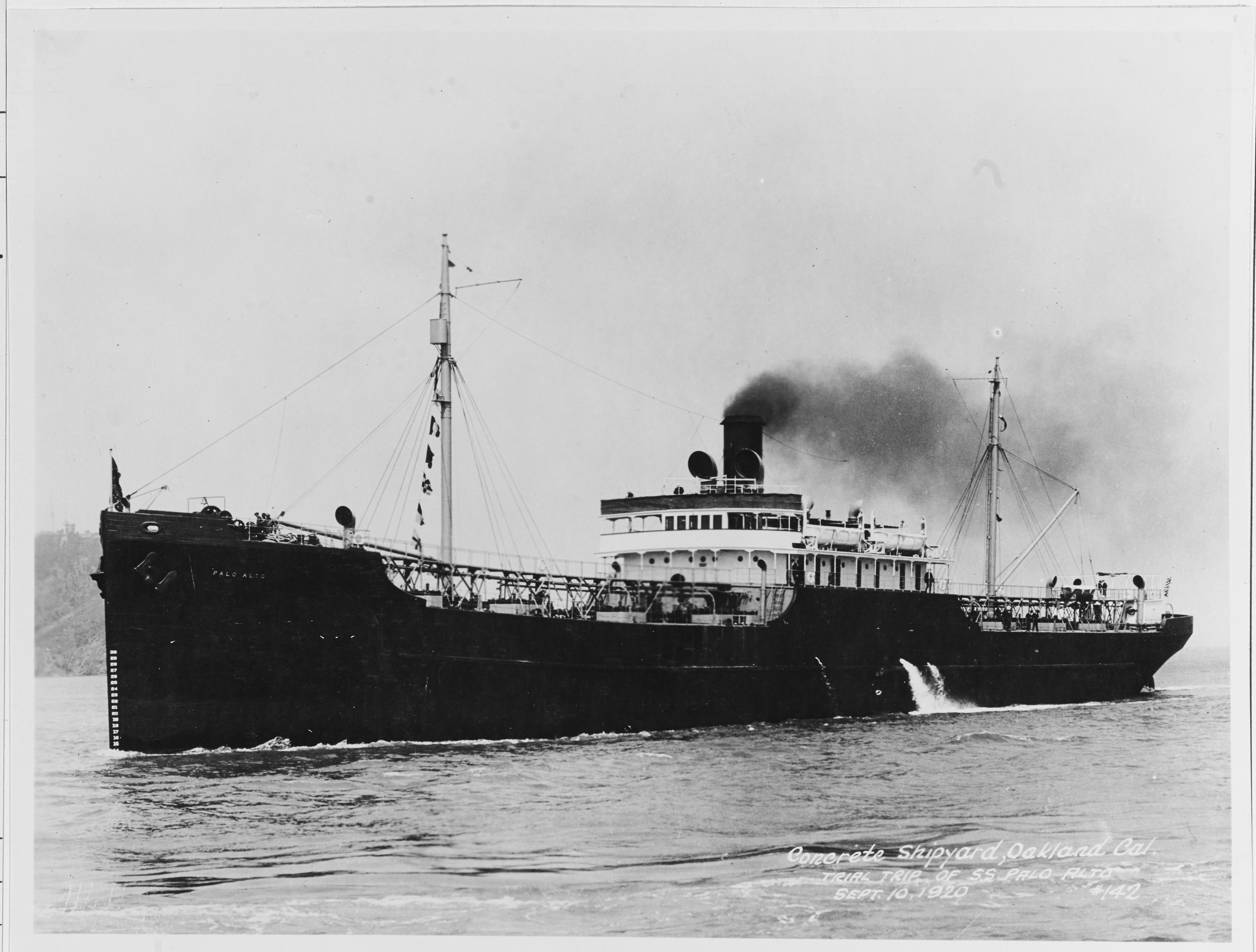SS Palo Alto
Wreck Location
The Palo Alto lies in the waters of Seacliff State Beach at the foot of the local pier. While viewable from the pier when the pier is open and viewable from the beach itself, the Palo Alto has been off limits to the general public since the 1990s or 2000s, at least in terms of walking on the deck and the wreck above water. Diving below water is something that isn't usually done but due to the very calm shallow water in a populated area, its not a difficult wreck to explore. For a wreck which has been lying in salt water for 90 years, the Palo Alto is in remarkable shape which may have to do with its strong reinforced concrete construction and partial sheltering inside Monterrey Bay. Major details are more than discernable on the wreck such as portholes and doorways. The wreck is right off California State Route 1 in Aptos, California south of San Francisco.
~ GPS Shipwreck Location ~
Latitude: 36° 58' 10.596" N Longitude: -121° 54' 50.4144" W
Description
In 1918, President Woodrow Wilson signed the Emergency Fleet Corporation into existence to build 24 reinforced concrete and iron merchant steamships for use in the first World War. Steel and iron supplies were extremely low in numbers, having been allocated to battleships, tanks, munitions and other heavy artillery, meaning Concrete was the only other possible option for wartime ship construction. Wood was out of the question. The 24 planned concrete ships were known as the "Emergency Fleet". Of the 24 ships planned, only 12 were finished, all of which were launched and completed after armistice on November 11, 1918. The remaining 24 unbuilt ships were never built and cancelled.

(Palo Alto on sea trials. Naval History and Heritage Command Photo No. NH 799.)
The Palo Alto was one of these 12 completed ships, built in 1919 by San Francisco Shipbuilding Company in Oakland, California along with her sister ship the Peralta. Despite being completed, the US government had no need for either ship. Palo Alto appears to have undergone some test sailing as proven by a photograph of her not long after construction under steam. Unlike other concrete ships such as her sister ship Peralta, the Selma, Atlantus, McKittrick and Cape Fear, the Palo Alto would never see service as as an operational steamship. She sat unwanted and unused in Oakland.
In 1929, Palo Alto was purchased by the Seacliff Amusement Corporation. Her steam engine and smokestack were removed and she was towed to Aptos, California at the head of Seacliff Beach. After being repositioned perpendicular to the beach with her bow facing southwest, the Palo Alto was intentionally sunk in 12 feet of water. The majority of the ship stayed above the waves. New superstructure was built, the masts removed and a fishing pier was built out to the hull connecting to the ship's stern. A cafe, a swimming pool and a dance floor were built and Palo Alto now served as a small amusement park. In 1931, the Seacliff Amusement Corporation went bankrupt. The pier and Palo Alto were purchased by the state of California for two dollars. All superstructure and major deck equipment including all the luxuries installed by her previous owners were removed leaving only the basic hull.
Palo Alto became a fishing spot open to the public and was used in this role for several decades. As time moved on and storms battered the old ship, the hull broke and failed in several locations, including two nasty storms in 1983 and 2016. As of present day, the Palo Alto is officially a shipwreck, abandoned to the elements and local wildlife. The state now considers the wreck an artificial reef, home to pelicans and giant starfish. Today, the stern, bow and part of the midships are still mostly intact, but much of the ship's middle has been destroyed by storms and is collapsing in on itself, exposing the rebar made of iron in the failing concrete.
Palo Alto was subject to a an episode of Huell Howser's TV series "California Gold" in the 1990s. At the time, the stern section was still open to the public and was still in use for sport fishing. Howser was able to explore the wreck in depth at areas normally off limits for the sake of the TV show.
Footnotes
Palo Alto was part of a series of ships built of concrete for the U.S. Military in the late 1910s early 1920s. During World War I, steel was a highly sought after material needed for warships and other high priority military equipment. Reinforced concrete was an easy to construct, strong and cheap alternative to steel. President Wilson approved the construction of an "Emergency Fleet" of 24 ships in 1918. Only 12 were finished, all after the war, and sold to commercial operators. Many ended up as fishing piers, breakwaters and shipwrecks. Only one is still afloat as a Powell River breakwater in British Columbia; the Peralta. The San Pasqual is also intact off the Cuban coastline, but is abandoned and likely not afloat.